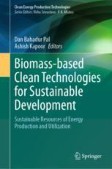Search
Search Results
-
Carcinogenic, non-carcinogenic risk, and attributable cases to organochlorine pesticide exposure in women from Northern Mexico
This study aimed to estimate the carcinogenic and non-carcinogenic risk as well as the attributable cases due to exposure to organochlorine...
-
Worldwide cases of water pollution by emerging contaminants: a review
Water contamination by emerging contaminants is increasing in the context of rising urbanization, industrialization, and agriculture production....

-
Ecotoxicological response of algae to contaminants in aquatic environments: a review
Algae play a vital role in aquatic ecosystems, contributing to oxygen production and serving as a foundational component of the food chain....

-
Presence of Contaminants of Emerging Concerns in the Environment
Contaminants of emerging concern (CECs) are a broad category of pollutants that can include everything from pesticides to pharmaceuticals, industrial...
-
Impact of Organochlorine Pesticides on Soil Microflora and Soil Fertility
Microflora is the soil microbes present in the top layer of soil, along with the plant roots. They include bacteria, actinomycetes, fungi, and algae....
-
Temporal trends, sources, and ecological risk of residual organochlorine pesticides (OCPs) in sediment core from the Dong** Lake, North China
A sedimentary record of the 19 organochlorine pesticides (OCPs) pollutants from Dong** Lake, north China, is presented in this study. According to...

-
Chemical analysis and genetic risk of soil and river contaminated with organochlorine pesticides used in cocoa farming
In this study, the level of toxic metals and organochlorine pesticides (OCPs) in the simulated leachate of the soil of a cocoa farm and a nearby...

-
Organochlorine pesticides and risk of papillary thyroid cancer in U.S. military personnel: a nested case-control study
BackgroundThe effects of organochlorine pesticide (OCP) exposure on the development of human papillary thyroid cancer (PTC) are not well understood....
-
Evaluation of the antioxidative response of diatoms grown on emerging steroidal contaminants
With increasing anthropic activities, a myriad of typical contaminants from industries, hospitals, and municipal discharges have been found which...

-
Occurrence of Organochlorine Pesticides (OCPs) Residues in Farmed and Wild Fish in Bangladesh and Implications for Human Health
The present study was designed to determine the level of organochlorine pesticides (OCPs), including endrin, heptachlor epoxide, heptachlor,...

-
Assessment of the efficiency of immobilized degrading microorganisms in removing the organochlorine pesticide residues from agricultural soils
To investigate the removal of organochlorine pesticide residues by immobilized degrading microbe, indigenous microorganisms from organochlorine...

-
An Overview of Different Plant Species Used for the Phytoremediation of Soil Contaminants
Environment and human health might be adversely affected by different organic and inorganic contaminants in the soil brought on by human ventures...
-
Organic Contaminants in Urban Soils
Organic pollutants are predominantly synthetic compounds made or extracted by humans, and it is therefore not surprising that they are common...
-
Level and risk assessment of selected polychlorinated biphenyls, polycyclic aromatic hydrocarbons, and organochlorine pesticides in walnut and soil
It is unknown how hydrophobic organic contaminants (HOCs) are distributed and how they affect the environment in high-fat nuts and their planted...

-
Monitoring of Organochlorine Pesticides (OCP) in Hair Samples of Wild Herbivorous Mammals Living in Remote and Protected Areas of the Far East and Siberia of Russia
Monitoring wildlife exposure to biological hazards is a critical component of the wildlife risk assessment. In this study 38 hair samples were...

-
Biochar Innovations for Adsorption of Water Contaminants in Water Treatment
Water stress resulting from the contamination of our vital water sources is an extensively acknowledged concern, underscoring the urgent need for...
-
An overview of electrokinetically enhanced chemistry technologies for organochlorine compounds (OCs) remediation from soil
In recent years, electrokinetic (EK) remediation technology has gained significant attention among researchers. This technology has proven effective...

-
Ecological Effects of Chemical Contaminants Adsorbed to Microplastics
Microplastics (MPs) have become a global concern, owing to frequent detection in aqueous and soil eco-systems. Their transport, release, and the...
-
Assessment of influence of heavy metal, organochlorine pesticide, and bacterial presence on water quality of Gomti river, India
Sustainable ecosystem is of essence to the river for its survival and maintenance of ecological balance. Gomti river, a groundwater-fed tributary of...

-
Biochemical Effects of Heavy Metals and Organochlorine Compounds Accumulated in Different Tissues of Yellow-Legged Gulls (Larus Michahellis)
In the present study, livers, kidneys and adipose tissue of Yellow-legged Gull ( Larus michahellis ) were collected. Samples were used to determine...

